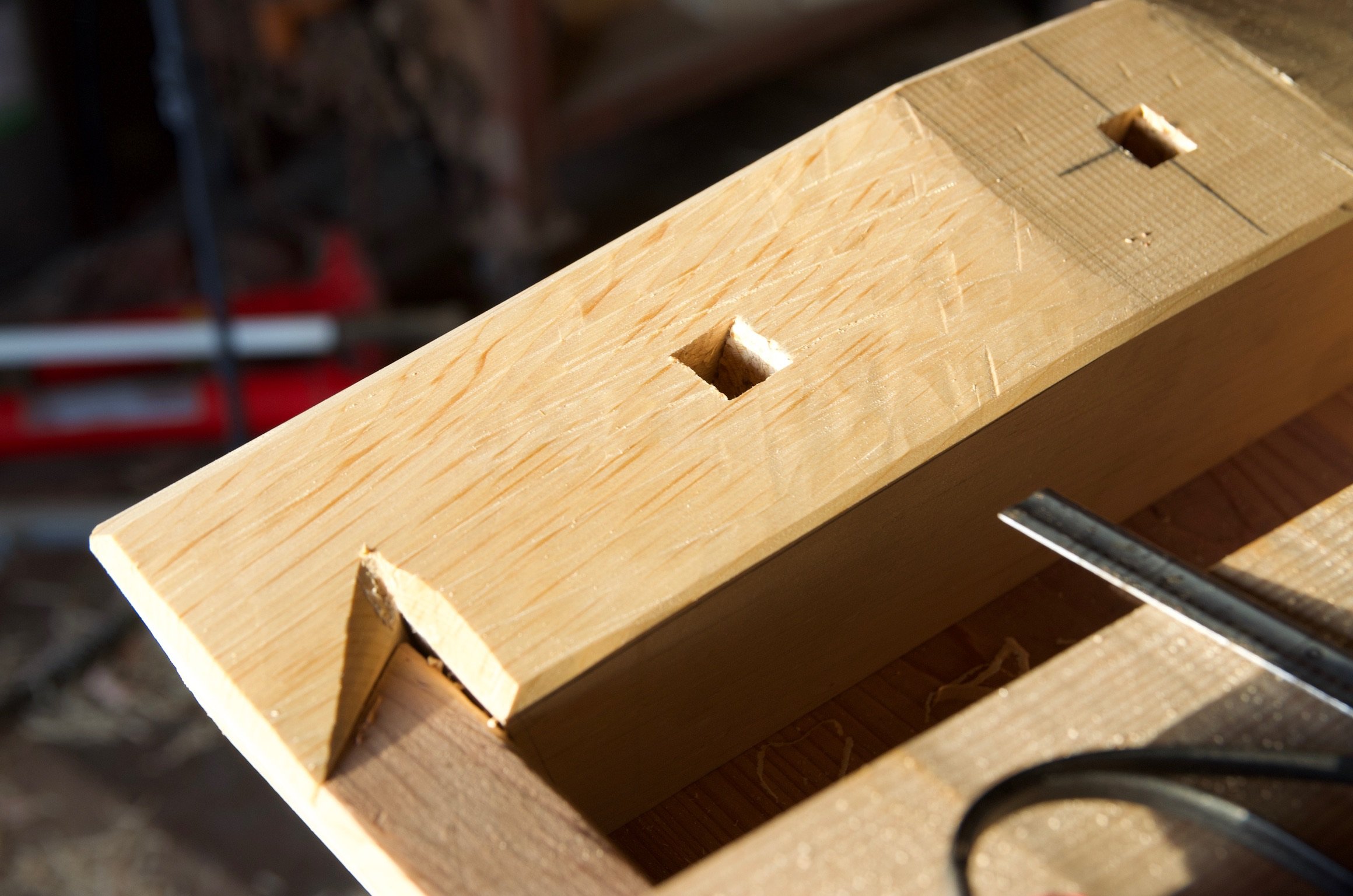Honryousen
-
I had been teaching this particular design from the Shimanto River in my workshops and college classes, using some rough drawings by an unknown researcher provided by a friend in Japan. In 2019 I was able to organize an apprenticeship with Mr. Nakaichi Nakagawa, the last builder of these boats. The project was a partnership with The Apprenticeshop in Rockland, Maine and Ms. Nina Noah, a former apprentice and staff person, came with me. We were also joined by Benjamin Meader, a videographer. With grant funding from the Traditional Small Craft Association in the US and the Niigata Arts Council in Japan, and crowdfunding, we were able to build a honryousen just outside of Niigata City, documenting the entire process. Later we would travel upriver to meet and interview the last builder of a similar style of boat once used on the upper Shimanto, and measure a boat.
I wrote an article for the Traditional Small Craft Association, one of our sponsors, about the project. Read it here.
The Apprenticeshop published our updates and videos here.
-
Honryousen means “typical fishing boat” and the type was known by several names. These vessels were the work vehicles for farmers and fishermen living in the broad delta near the mouth of the Shimanto River. There were used for fishing, dredging, hauling rice, and transportation in the river and its myriad canals and tributaries. After World War Two, the US Occupation encouraged the draining of canals and replacement with roads. Soon the pickup truck would do the work of these boats and they all but disappeared.
-
The boat is about twenty-two feet long and built of Japanese cedar. The materials are so large it is essentially just a three-plank boat, the bottom and sides made up of single planks. Nakagawa san was in his med-80s when we worked with him. He had apprenticed under his father building these boats, but by age thirty he had been forced to pivot to more modern designs and worked most of his career building steel dredges. In retirement he has had the opportunity to build a handful of wooden boats for non-profit groups.
Placeholder

The finished boat. A single beam is the only framing in the hull.

Nina Noah finishing the inside with a hand plane.

Props, rope, and a single plank draw the side planks to the hull.

Mr. Nakagawa caulking the bottom using cypress bark.


Hand planing the exterior of the hull.

A detail of the beam at the stern.

Mr. Nakagawa spreading urushi, or raw lacquer, as a bedding compound.

Trimming plank edges first with an axe, followed by an adze and then a plane.
